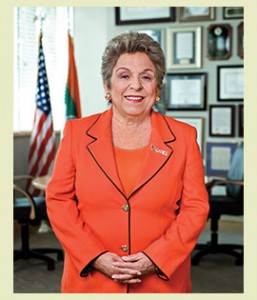Donna Shalala and The Boom Boom Theory

Connector.
Donna Shalala spoke at a breakfast meeting at the University of Denver (DU) the other day. She seems to be one of the most connected people on earth. She’s the former president of Hunter College, the University of Wisconsin, and the University of Miami. She also served for eight years as the Secretary of Health and Human Services during the Clinton administration. Perhaps most impressive (to me at least), over ten years at the University of Miami, she raised three billion dollars in voluntary contributions.
Our chancellor, Rebecca Chopp, interviewed Shalala before an audience of some 300 faculty, alumni, and students. The conversation soon turned to inclusive excellence (IE), which is a fundamental initiative at DU. We define IE as, “…the recognition that an … institution’s success is dependent on how well it values, engages and includes the rich diversity of students, staff, faculty, administrators, and alumni constituents. … The goal is to make IE a habit that is implemented and practiced consistently throughout …” the university.
Chancellor Chopp asked Shalala what advice she could offer to build an inclusively excellent university. Shalala’s answer reminded me that multi-channel communication is fundamental to multi-cultural success.
In a diverse community, Shalala noted, people have diverse communication styles. They may use the same word for different concepts. Or they may describe the same concept with different words. Further, they may well be tuned in to different channels.
Given the varying communication styles, Shalala argues that leaders of diverse communities need to deliver the same message multiple times, in multiple ways, through multiple channels to make sure it reaches all audiences. Shalala’s staff called this the Boom Boom theory of communication because one message (“Boom”) gets repeated across multiple channels.
It’s a good reminder that we need to repeat ourselves, perhaps more often than we think. I’ve written before that redundancy is not a sin; Shalala argues that we need to actively promote redundancy. Coupled with a concept like the sponsorship spine, the Boom Boom theory can produce effective communications in even the most diverse organization.
And what about those three billion dollars? Shalala says there’s no secret to fundraising. It requires a lot of patience and listening. Find out what your contributors are interested in and deliver it.
But patience and listening only take you so far. Shalala also reminded us of the value of good old-fashioned story telling. At fundraising events, she doesn’t talk about abstract concepts or programs or buildings. She simply tells stories. She admits that some of her stories “leave ‘em weepy” – they’re touching and effective. She wants her contributors to reach for their wallets. So first, she has to reach for their hearts. Combining the Boom Boom strategy with the leave-em-weepy tactics seems to be a killer combo.
